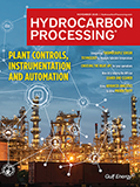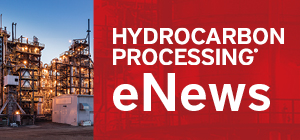Catalysts
Build a solid GHG BACT cost-effectiveness calculation to avoid CCS costs
Determining which technology constitutes greenhouse gas (GHG) best available control technology (BACT) for a new or modified facility often hinges on the GHG BACT cost calculation.
Innovations
In a market with reduced capital investment budgets, revamps and upgrades are becoming increasingly prevalent to extend asset service life.
Remove O2 and CO from monomer and N2 streams in polymer plants
To prevent deactivation, the latest generation of polymerization catalysts requires removal of a wide range of contaminants to ultra-low levels in the monomer, comonomer, solvent and reaction-controlling gas streams in polyolefin production processes.
NOx, NOx, who’s there—steam cracker or SMR?
This article addresses the generation of thermal NOx in the furnace of each process, NOx abatement by SCR, and premature degradation of SCR catalyst by chromium species in the flue gas.
Aggreko awarded US patent for ‘catalyst cooling’ process in refining
The patented solution, developed by Aggreko Process Services (APS) team, focuses on last phase catalyst cooling and uses a combination of heat exchangers, chillers and pumps.
Afton Chemical to expand Singapore additives site
The second phase, which includes the construction of additional component production units, will more than double Afton’s investment in Jurong Island for a total of about S$400 million.
BASF to expand Thai mobile emissions catalysts
The company is planning to construct a new 35,000-square-meter facility to replace its existing plant in Rayong, providing increased operating space and upgraded manufacturing capabilities comparable to BASF’s other automotive catalysts manufacturing sites around the world.
HP News
Russian blending facility utilizes advanced control technologyLUKOIL’s Nizhegorodnefteorgsintez gasoline blending facility in Kstovo, Russia, will integrate Honeywell software, which is designed ..
How to cost-effectively adapt to a tight oil world
The increase in domestic production of light tight oil (LTO) has resulted in rapid shifts to processing these crudes in North American (NA) refineries.
European refiner revamps delayed coker to meet Euro 5 specifications
This case study chronicles how the European refiner Rompetrol Rafinare SA upgraded its Petromidia refinery in Navodari, Romania, includingthe revamping the delayed coker unit (DCU) to address existing operating problems.

- ITT to acquire SPX Flow for > $4.77 B, expanding leadership in highly engineered components and adjacent flow technologies 12/5
- MOL Group introduces eco-friendly Bag-in-Box packaging for lubricants 12/5
- Addis Energy secures $8.3 MM to scale its transformative approach to low-cost ammonia production 12/5
- World Fuel Services supplies cruise line with waste-based biofuels 12/5
- Chevron announced $18 B-$19-B CAPEX budget for 2026 12/5
- Russia and India sign deal to build urea plant in Russia 12/5




